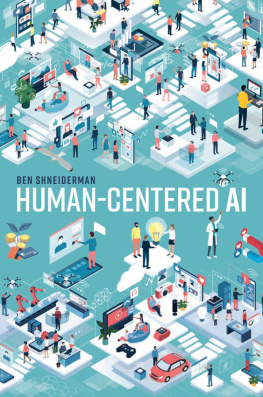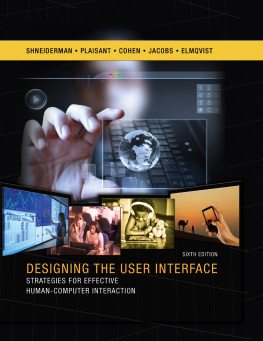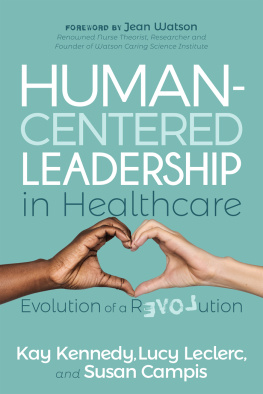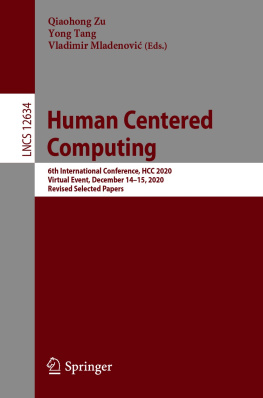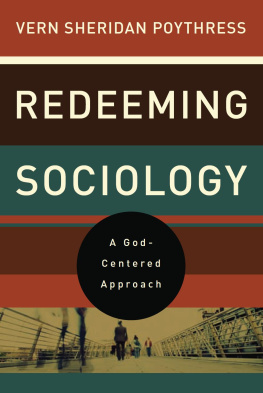Ben Shneiderman - Human-Centered AI
Here you can read online Ben Shneiderman - Human-Centered AI full text of the book (entire story) in english for free. Download pdf and epub, get meaning, cover and reviews about this ebook. year: 2021, publisher: OxfordUP, genre: Politics. Description of the work, (preface) as well as reviews are available. Best literature library LitArk.com created for fans of good reading and offers a wide selection of genres:
Romance novel
Science fiction
Adventure
Detective
Science
History
Home and family
Prose
Art
Politics
Computer
Non-fiction
Religion
Business
Children
Humor
Choose a favorite category and find really read worthwhile books. Enjoy immersion in the world of imagination, feel the emotions of the characters or learn something new for yourself, make an fascinating discovery.
- Book:Human-Centered AI
- Author:
- Publisher:OxfordUP
- Genre:
- Year:2021
- Rating:4 / 5
- Favourites:Add to favourites
- Your mark:
- 80
- 1
- 2
- 3
- 4
- 5
Human-Centered AI: summary, description and annotation
We offer to read an annotation, description, summary or preface (depends on what the author of the book "Human-Centered AI" wrote himself). If you haven't found the necessary information about the book — write in the comments, we will try to find it.
Human-Centered AI — read online for free the complete book (whole text) full work
Below is the text of the book, divided by pages. System saving the place of the last page read, allows you to conveniently read the book "Human-Centered AI" online for free, without having to search again every time where you left off. Put a bookmark, and you can go to the page where you finished reading at any time.
Font size:
Interval:
Bookmark:


Great Clarendon Street, Oxford, OX2 6DP,
United Kingdom
Oxford University Press is a department of the University of Oxford. It furthers the Universitys objective of excellence in research, scholarship, and education by publishing worldwide. Oxford is a registered trade mark of Oxford University Press in the UK and in certain other countries
Ben Shneiderman 2022
The moral rights of the authors have been asserted
All rights reserved. No part of this publication may be reproduced, stored in a retrieval system, or transmitted, in any form or by any means, without the prior permission in writing of Oxford University Press, or as expressly permitted by law, by licence or under terms agreed with the appropriate reprographics rights organization. Enquiries concerning reproduction outside the scope of the above should be sent to the Rights Department, Oxford University Press, at the address above
You must not circulate this work in any other form and you must impose this same condition on any acquirer
Published in the United States of America by Oxford University Press
198 Madison Avenue, New York, NY 10016, United States of America
British Library Cataloguing in Publication Data
Data available
Library of Congress Control Number: 2021940444
ISBN 9780192845290
DOI: 10.1093/oso/9780192845290.001.0001
Printed in Great Britain by
Bell & Bain Ltd., Glasgow
Links to third party websites are provided by Oxford in good faith and for information only. Oxford disclaims any responsibility for the materials contained in any third party website referenced in this work.
T his book grew out of more than forty public lectures at leading research centers, universities, and government agencies, in which I refined my presentations to clarify three central ideas. These ideas were presented in three refereed papers, giving me still more feedback leading to the specific and constructive guidance in this book. As I worked, the primacy of human values such as rights, justice, and dignity grew steadily, even as I described more specific design guidelines.
Human-Centered AI offers fresh thinking for designers to imagine new strategies that support human self-efficacy, creativity, responsibility, and social connections. A greater emphasis on human-centered AI will reduce fears of AIs existential threats and increase benefits for users and society in business, education, healthcare, environmental preservation, and community safety.
The first idea is a framework for thinking about technology design, which shows how creative designers can imagine highly automated systems that preserve human control. The examples include familiar devices, such as elevators, self-cleaning ovens, and cellphone cameras, as well as life critical applications, such as highly automated cars, tele-operated surgical robots, and patient-controlled pain relief. The guidelines and examples clarify how designers can support high levels of human control and high levels of automation.
The second idea is to show how the two central goals of AI researchemulating human behavior and developing useful applicationsare both valuable. They generate four pairs of metaphors that could be combined in developing products and services:
1) Intelligent agents and supertools,
2) Teammate and tele-bots,
3) Assured autonomy and control centers, and
4) Social robots and active appliances.
The third idea bridges the gap between widely discussed ethical principles of HCAI and the realistic steps needed to realize them. The book describes how to adapt proven technical practices, management strategies, and independent oversight methods. It guides software team leaders, business managers, and organization leaders in developing:
1)Reliable systems based on sound software engineering practices,
2)Safety culture through business management strategies, and
3)Trustworthy certification by independent oversight.
Technical practices for programmers, designers, software engineers, and team leaders include audit trails to enable analysis of failures, just like the flight data recorders (aviation black boxes, which are really orange boxes) that have made civil aviation such a success story. Then Human-Centered AI explains software engineering workflows, verification and validation testing, bias testing to enhance fairness, and explainable HCAI user interfaces.
Management strategies for creating a safety culture begin with leadership commitment to safety that leads to better hiring practices and training oriented to safety. Other management strategies are extensive reporting of failures and near misses, internal review boards for problems and future plans, and alignment with industry standard practices.
Trustworthy certification comes from accounting firms that conduct independent audits, insurance companies that compensate for failures, non-governmental and civil society organizations that advance design principles, and professional organizations that develop voluntary standards and prudent policies. Then government interventions and regulation will play important roles, especially when they are designed to accelerate innovation, as they have done with automobile safety and fuel efficiency.
Many research and development challenges remain, but I hope my efforts provide a guidebook to hope and a roadmap to realistic policies.
W riting a book is a consuming experience that takes over my life in mostly energizing and satisfying ways. Each book I have done draws me in with excitement and the challenge of doing my best, because I believe in the importance and value of the project.
This book was especially meaningful as I have been thinking about the distinctive qualities that make us human for most of my adult life. Yes, I have been deeply involved in developing new technologies and have the satisfaction of seeing some of my contributions become widely used, but I always thought of the technology as serving human needs. I advocated for humancomputer interaction, information visualization, and design thinking, with occasional excursions to challenge those who thought the goal of technology was to mimic or replace humans. I believed in the responsibility of those who design and use technology. For those interested, I tell some of my story in the Personal Epilogue.
In writing this book, I became aware that I could get beyond the past controversies by offering a positive vision of how to design potent future technologies. I embraced the contributions of artificial intelligence (AI) researchers, while suggesting how their breakthroughs could be put to work in successful products and services that were reliable, safe, and trustworthy. The book begins with some familiar controversies, then offers the fresh idea of the human-centered AI (HCAI) framework that shows how it is possible to have high levels of human control and high levels of computer automation, as is done in digital cameras.
The second vital idea is to offer new metaphors for describing technology design, which include supertools, tele-bots, active appliances, and control centers. The third idea is a set of recommendations for governance structures to bridge the gap between ethics and practice, such as audit trails, explainable designs, and independent oversight.
Throughout the book guidelines, examples, and references are meant to guide readers in how they could think differently, enabling them to create better products and services that actually serve human needs. I read avidly, taking in about a hundred books, a thousand papers, and a thousand websites to ensure I was in touch with the current state of research, development, innovation, and commercial practice. When appropriate, I contacted about a hundred authors and practitioners for email comments and phone or zoom discussions. I worked hard to credit and cite those whose work I admired, but I am aware that there is much more thoughtful work that I have yet to read. My work favors research, reports, websites, and videos that are in English, so I hope others can fill in what is missing from other languages, countries, and cultures.
Next pageFont size:
Interval:
Bookmark:
Similar books «Human-Centered AI»
Look at similar books to Human-Centered AI. We have selected literature similar in name and meaning in the hope of providing readers with more options to find new, interesting, not yet read works.
Discussion, reviews of the book Human-Centered AI and just readers' own opinions. Leave your comments, write what you think about the work, its meaning or the main characters. Specify what exactly you liked and what you didn't like, and why you think so.

